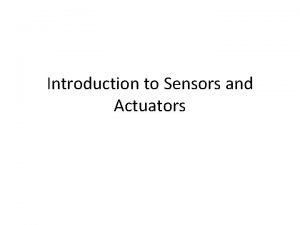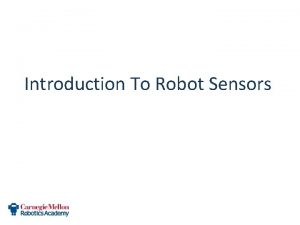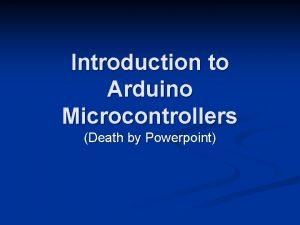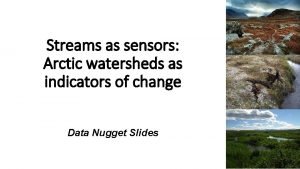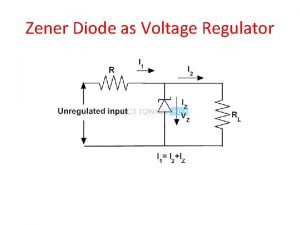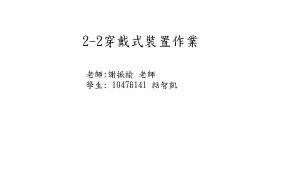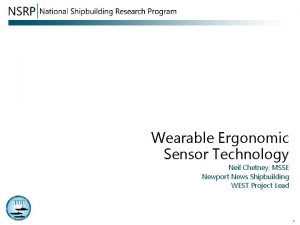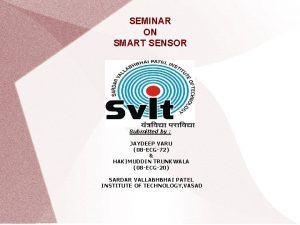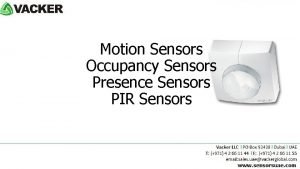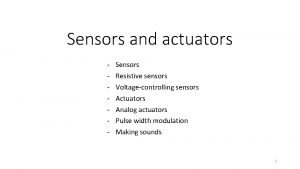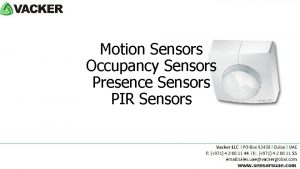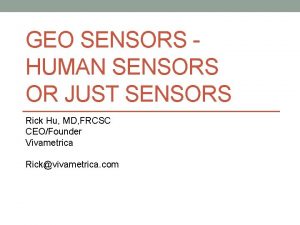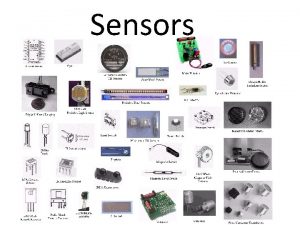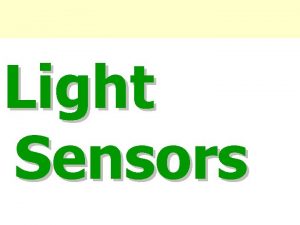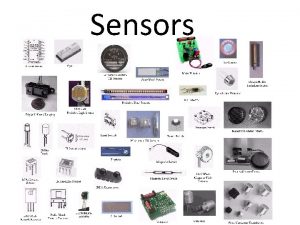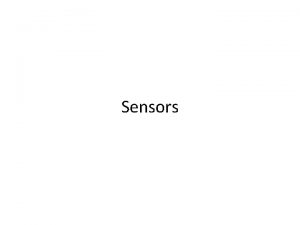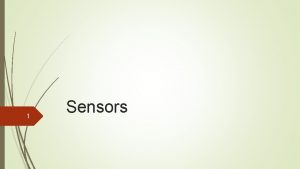Introduction to Sensors What are sensors Your answers












- Slides: 12

Introduction to Sensors

What are sensors? • Your answers here!

What are sensors? • A sensor tells a robot one simple thing about it’s environment – Temperature – Distance – Light intensity • Allow robots to see and feel the physical world through which they travel • Two main types of sensors: digital and analog

Analog Sensors • Can provide a range of feedback • The robot will interpret feedback from the sensor as a number from 0 to a predefined maximum (1024 for most Vex sensors) • A light sensor has many states: – If it is very bright, the sensor will return a number close to 30 – If it is very dark, the sensor will return a number close to 1000

Digital Sensors • Can distinguish between two different “states” • The meaning of the states depends on the sensor • A bumper sensor has two “states” – If it is pressed, it is a 0 – If it is not pressed, it is a 1

Variables • A value-holding “container” with a label • You can retrieve the value in this “container” when it is needed » There are different types of values you can store in variables. » You will use the “int” type, which allows you to store any whole number from 0 to a large number (positive or negative) » You can assign a starting value to your variable which will store that value at the start of the program

Bump Sensor Introduction • Open the project “BUMPERTEST. ECP” • Download it to your robot and open the terminal window

Understanding bump sensor code • Comments - allows you to leave notes to yourself and others about your code • The compiler ignores comments

Understanding bump sensor code • While Loop – block of code that repeats itself as long as the condition inside the parenthesis is true – The == operator returns true if both sides are equal, and false if they are not equal – In our code loop will always equal 1, so this loop will run forever

Understanding bump sensor code • Bumper sensor – stores the value of the digital input 6 to the variable “bumper” – Now the robot knows if the bump sensor is being pressed in (0) or not (1)

Understanding bump sensor code • Print to screen – displays information in the terminal window – This particular code displays the value of the bump sensor For now, make sure your settings are as follows: * Directive: %d * Type-cast: int * Variable: the variable you want to display * Message: the message with the variable

Writing your own code • We are going to write a program that runs one motor until a bump sensor is pressed in • Begin by opening easy. C
 Mikael ferm
Mikael ferm Introduction to sensors and actuators
Introduction to sensors and actuators Introduction to sensors ppt
Introduction to sensors ppt Arduino powerpoint
Arduino powerpoint Data nugget streams as sensors answers
Data nugget streams as sensors answers Answer the questions in your notebook
Answer the questions in your notebook Give us your hungry your tired your poor
Give us your hungry your tired your poor Static characteristics of sensors
Static characteristics of sensors Wearable inertial sensors
Wearable inertial sensors Ergonomic sensors
Ergonomic sensors Ncs slogan
Ncs slogan Conclusion of smart sensors
Conclusion of smart sensors Engine oil debris sensors
Engine oil debris sensors

